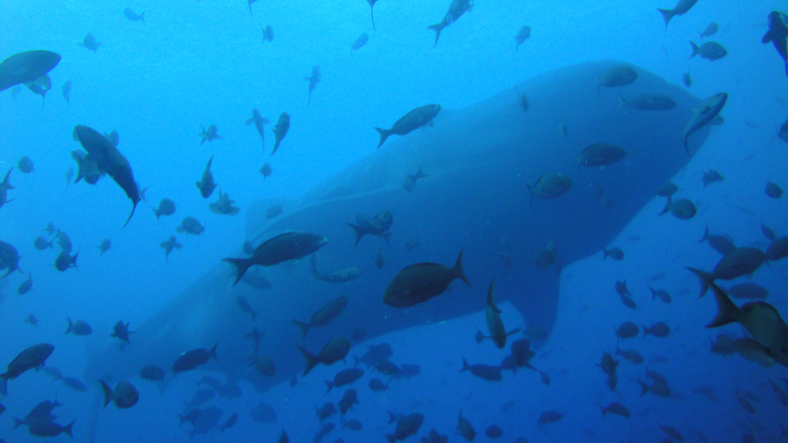Partner Content
The energy geoscience industry prioritises the environmental sustainability of all operations. While all anthropogenic activities in the ocean have the potential to affect marine life, extensive study has demonstrated that geophysical exploration is safe and sustainable for all ocean creatures, from the smallest plankton to the largest whales.
Plankton forms the essential base of the marine food chain. A widely-discussed paper, by Robert McCauley and co-writers in 2017, suggested that seismic surveys may result in wide-scale plankton mortality. However, these results were inconsistent with previous scientific literature, and an extensive review of the methodology demonstrated that the methodology did not support the conclusions.
Moreover, a follow-up modelling study by Anthony Richardson and fellow researchers, also published in 2017, indicated that even if the results were real, seismic surveys would have no discernable effect on zooplankton biomass on a regional scale.
A later, 2019, study by David Fields and colleagues, published in the ICES Journal of Marine Science, showed results much more aligned with the prior literature: increases in mortality for a copepod species occurred only within five metres of the source, a negligible effect when compared to impacts from other sources, like vessel propellers.
The effects of seismic surveys are no more significant than the effects of other industrial uses of the ocean. This critical component of the food chain faces far greater challenges from changing oceanographic conditions as a result of climate change.
Worldwide, thriving fisheries coexist with seismic surveys. In regions like Norway, Australia, and the United States Gulf of Mexico, fisheries and energy comprise vital pieces of the economy.
While catches of certain species may temporarily decrease near the survey, a years-long study of demersal fish in Australia by researcher Mark Meekan and collaborators in 2021 indicated, “there were no short-term (days) or long-term (months) effects of exposure on the composition, abundance, size structure, behaviour, or movement of this fauna. These multiple lines of evidence suggest that seismic surveys have little impact on demersal fish in this environment.”
There is further no evidence of mortality following exposure to seismic surveys under typical operational conditions. Tissue damage appears to occur due to exposure from a shockwave, but shockwaves are not present in seismic survey signals. As with plankton, climate change and impacts from overexploitation represent the present threats.
There is a wide body of research highlighting the potential for sound from anthropogenic sources including shipping, construction, naval exercises and geophysical surveys to alter behaviour, reduce communication space through the “masking” of calls between animals, cause hearing impairment such as Temporary Threshold Shift (TTS) and Permanent Threshold Shift (PTS), as well as concern that sounds may result in animals stranding.
A study of data collected during surveys in the United Kingdom recorded variations of behavioural responses, including lower detection rates, avoidance behaviour, reduced feeding behaviour and even positive interactions such as moving toward survey vessels.
A study by Paul Thompson and co-researchers in 2013 and published by the Royal Society showed that while short-term disturbance to a seismic source was evident, there was no long-term displacement of animals. Responses are often species and context-specific, and some cetaceans such as the deep-diving group of beaked whale species appear to be more susceptible to certain types of underwater sound such as naval sonar, which differ significantly from the low-frequency pulse of a seismic sound source.
Seminal work published in the Journal of Aquatic Mammals in March 2021 identified precautionary thresholds for levels of sound that are likely to result in behavioural responses and auditory damage. This helps to inform the way operations are mitigated and gives confidence to the protocols put in place to reduce the risk of operations negatively impacting individuals and populations.
Standard protocols for mitigating the risk of injury and disturbance have been in place since the mid-90s when the UK’s Joint Nature Conservation Committee (JNCC) introduced the first guidance for industry. This protocol has been adopted and adapted around the globe and has formed the basis of advice from industry for areas that have no statutory protocol in place.
Common measures include the slow increase in sound output from the source over some time to allow animals to move away, and monitoring of a 500 m radial zone around the sound source, both visually by trained professional observers (Marine Mammal Observers – MMOs) and acoustically by specialised systems designed to listen for marine mammal calls (Passive Acoustic Monitoring – PAM). Use of the sound source is either delayed or paused depending on the proximity of relevant protected species and resumed once they have moved away. The measures are primarily applied to whales and dolphins but may also be applied to relevant protected species.
Seismic surveys have been undertaken globally using the same technology for decades, with no evidence of long-term, population-level adverse impacts. Regulatory agencies in jurisdictions where surveys are conducted regularly, including the US and UK, have concluded that “to date, there has been no documented scientific evidence of noise from (sound sources) used in geological and geophysical (G&G) seismic activities adversely affecting marine animal populations or coastal communities”, and that “if mitigation measures are appropriate and effectively implemented, the risk (of injury] could be reduced to negligible levels”.





